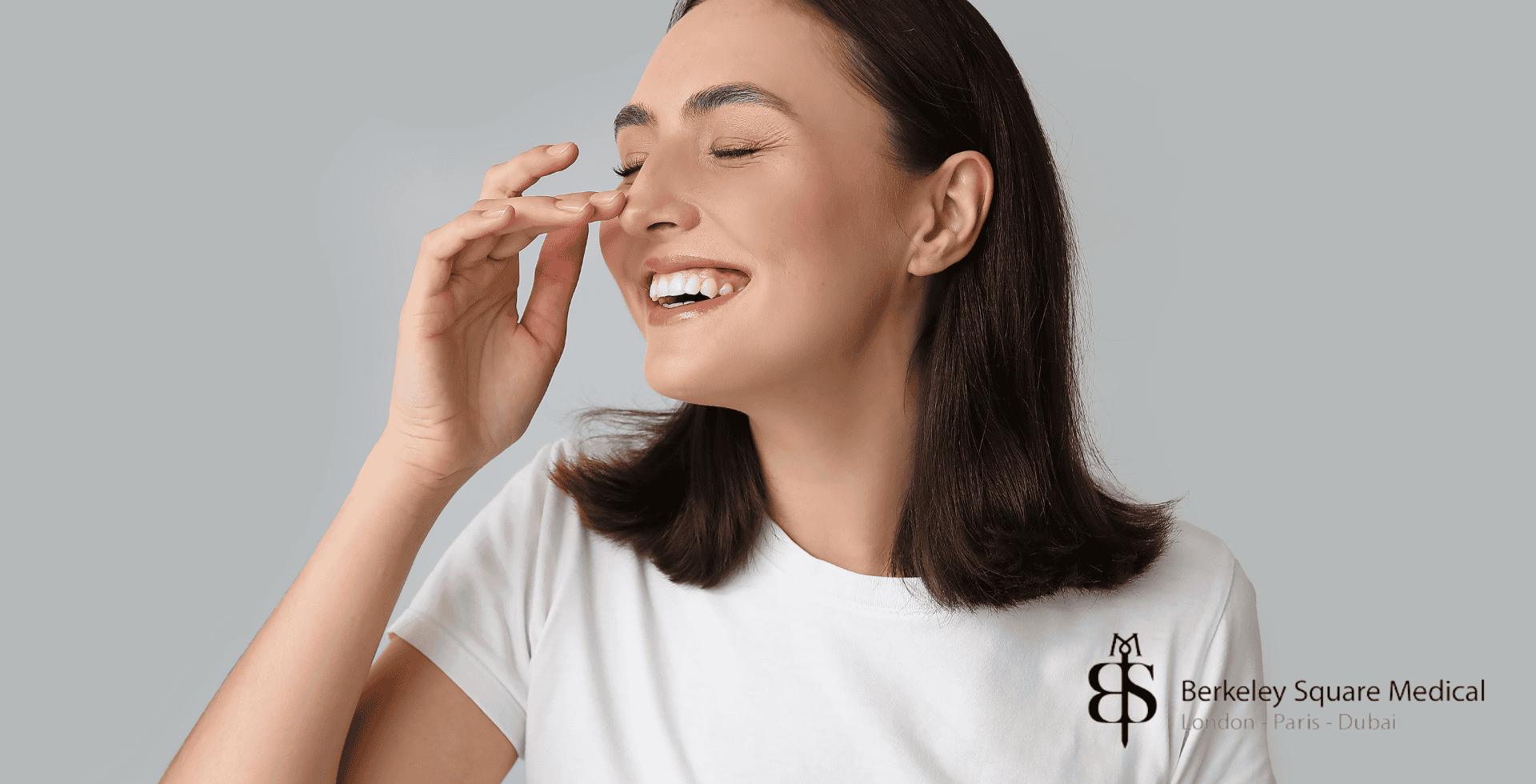
A hooked nose, often referred to as an aquiline nose, is a distinctive nose shape characterised by a high bridge and a drooping tip. While many people find this nose shape appealing and natural, others feel it disrupts the balance of their facial features, especially when viewed in profile. Hooked nose rhinoplasty is a specialised surgical approach to reshape this nose type, creating a balanced, natural-looking result that complements the face.
In addition to enhancing aesthetic harmony, this procedure may also address functional concerns, like improving airflow and breathing, making it an appealing choice for those who seek both form and function.
A hooked nose is defined by its unique shape—a high nasal bridge that curves down to a low, drooping tip, creating a prominent, banana-like profile. This nose shape, also known as an aquiline nose, is common in individuals of Mediterranean and Hispanic descent, though it appears in people of various backgrounds.
The hooked nose shape is primarily genetic, passed down within families and ethnic groups. However, it can also develop as a result of past injuries, such as sports accidents or trauma that affects nasal structure. Additionally, as we age, the natural loss of skin elasticity may cause the tip of the nose to droop further, making the hooked shape more pronounced. For some, a previous rhinoplasty or nasal surgery that did not deliver the desired outcome may have also contributed to a hooked appearance.
One common concern for those with a hooked nose is that the shape often appears more pronounced when smiling. The drooping tip and weak cartilage structure can cause the tip to widen and pull downward when facial muscles are engaged. This effect can make the hooked appearance more prominent and is a frequent motivation for seeking correction.
Hooked nose rhinoplasty, also known as aquiline rhinoplasty, is often sought to address both aesthetic and functional concerns. Many people choose this surgery to improve the overall balance and harmony of their facial profile.
The goal of hooked nose rhinoplasty is to create a balanced and proportionate nose that aligns with other facial features. Patients often wish to reduce the prominence of the nose’s bridge and achieve a slightly elevated tip, creating a profile that is more in line with conventional aesthetic proportions. By addressing these issues, hooked nose rhinoplasty can significantly enhance facial harmony and, as a result, boost self-confidence.
Beyond aesthetics, rhinoplasty can address structural issues that impact breathing. Many individuals with a hooked nose may also have a deviated septum or other internal nasal structures that obstruct airflow. Hooked nose rhinoplasty can be combined with septoplasty to correct these structural issues, allowing for smoother, unrestricted breathing. This dual benefit of improved aesthetics and function makes hooked nose rhinoplasty an appealing option for those looking to enhance both their appearance and quality of life.
Hooked nose rhinoplasty is a specialised surgical approach that addresses the unique structure of a hooked or aquiline nose. The procedure involves carefully reshaping the nasal dorsum (bridge) and tip to achieve a balanced, natural-looking profile.
Hooked nose rhinoplasty aims to create a nose that looks natural, balanced, and in harmony with the patient’s facial structure. The goal is for the nose to appear as if it was never altered while still enhancing the patient’s profile and overall facial symmetry. Post-surgery, patients typically notice that their nose no longer droops when they smile, which can be a significant confidence boost.
Understanding the recovery process and following aftercare instructions is essential for optimal healing and results. Hooked nose rhinoplasty, like other rhinoplasty procedures, requires patience during the recovery phase to ensure the best outcome.
The initial recovery period typically lasts one to two weeks, during which swelling and bruising are common, especially around the nose and under the eyes. Patients usually return to their regular activities within two weeks, although complete healing can take several months. The final shape of the nose will become more visible as residual swelling gradually subsides.
Rest and Elevation: Keeping the head elevated while resting or sleeping helps reduce swelling.
Avoiding Strenuous Activities: Patients should avoid heavy lifting, strenuous exercise, and any activity that risks nose trauma for at least a month post-surgery.
Following Surgeon’s Instructions: Applying cold compresses, taking prescribed medications, and attending follow-up appointments are crucial for a smooth recovery and optimal results.
Choosing an experienced and qualified surgeon is essential to achieve the best outcome with hooked nose rhinoplasty. Look for a surgeon with a specialisation in rhinoplasty and a portfolio of similar cases, particularly with experience in ethnic and profile-balancing rhinoplasty.
Questions to Ask During Consultation:
Hooked nose rhinoplasty typically takes two to three hours, depending on the complexity.
The goal is to create a nose that harmonises with your facial structure while appearing natural and unoperated.
Initial improvements are visible within a few weeks, but final results may take up to a year as swelling completely resolves.
The procedure is designed to correct drooping without impacting muscle function, allowing a natural smile post-recovery.
As with any surgery, risks include infection, scarring, or dissatisfaction with the outcome. Selecting a skilled surgeon reduces these risks and improves overall satisfaction.